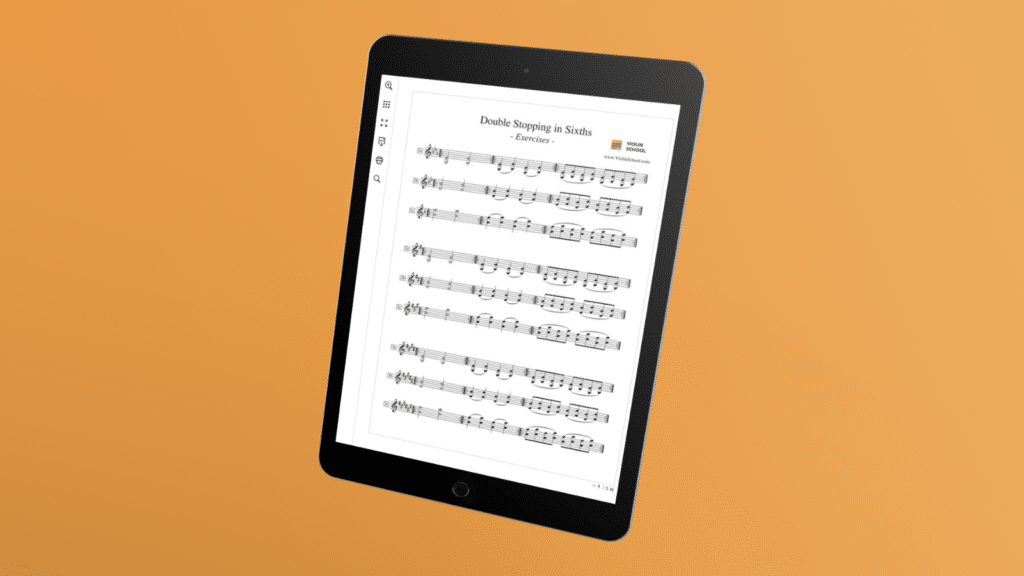A common problem when learning the violin is understanding where you’ve got to in the learning process.
This is important, because if you don’t have any reference points with which to measure your progress, it can be hard to know whether what you are doing is working.
And if you can’t be objectively sure that you’re doing things right, then you won’t have confidence in what you’re doing.

A strong level of self-confidence and certainty about what you are doing is absolutely crucial to being able to perform effectively on the violin.
A comprehensive curriculum can be a very useful tool for developing your confidence about where you’ve already got to with your learning.
A Curriculum is a very useful way of providing this objectivity. It provides a clear breakdown of topics into different levels of achievement.
Unlike other systems of measurement, such as exam grades or graded learning systems such as the Suzuki method, a good curriculum goes into detail about the actual topics involved in each level of learning.
By seeing the detail of what makes up each level, you get a much clearer sense of the ‘big picture’, and the true scope of your learning journey becomes apparent.
At the entrance to a big public park, it’s common to see a giant map of the area, with a big arrow on it that says ‘you are here’.

By putting your current location into context like this, you can suddenly see the ‘big picture’... the many different routes available to you start to become apparent, and you get a sense of the overall journey that lies ahead of you.
A map is very useful, but it has its limitations. It can tell you where you could go, but it doesn’t tell you where you should go!
One of the most important functions of a Curriculum is to show not just the topics that you need to learn and master, but also a suggested order in which to approach them.
This sequence or ‘gradient’ should be smooth... always challenging you in a new and interesting way, but never pushing you so far out of your comfort zone that it becomes too difficult or demotivating.
It’s very important to note that there’s no one ‘best’ way through the topics of violin playing.
Just as there are different tracks to the top of a mountain, there are limitless routes to choose as you navigate the many topics required for great violin playing.

Which track you take will depend on a number of factors:
Remember that a curriculum is a general guide rather than a definitive set of instructions. Although the overall direction of a curriculum should offer a progressive sequence of topics for you to learn, the exact route that you take through the detail of each level can and should vary depending on what’s best for you.
We’ve put together a curriculum for our learners which provides a comprehensive, step-by-step list of topics, sorted into different ‘levels’.
These ‘levels’ are unique to ViolinSchool, but the minimum achievement level for each level is approximately equivalent to the ABRSM exam grade system.

In other words, if you’ve mastered ViolinSchool Level 1, you should be able to complete ABRSM Grade 1 with good results.
We consider the ViolinSchool Curriculum to be a ‘live’ document, which means we regularly refine and update the sequence according to the latest research. Your comments and feedback are always welcome!
Remember that everyone’s path through the sequence will be slightly different.
Use the curriculum as a guide, but don’t feel that you have to learn each topic in the order that it is listed.
Also remember that most topics are complex and multi-layered, and will need to be learnt and developed in stages over a long period of time. It’s best not to assume that you can ‘learn’ a topic in one sitting!
Finally, be sure to consolidate each topic as best you can, before moving forward to the next level.
Use our online courses to acquire the skills you need, but also choose plenty of practice exercises from our Digital Library, to ensure you are carefully drilling everything you’ve learnt.

This kind of consistent, conscientious training is necessary for building up your habits and instinctive skills.
Doing this with every topic at every level will give you the confidence to keep moving through the curriculum, knowing that you’re building your violin playing on solid foundations!
Please visit our sponsors:
London String School - Tuition for Adult Learners in London
MusicLand - Creative Music Products for Teachers and Learners
Please visit our sponsors:
FiddlerShop.com - Quality instruments at an affordable price
London String School - Tuition for Adult Learners in London
MusicLand - Creative Music Products for Teachers and Learners
